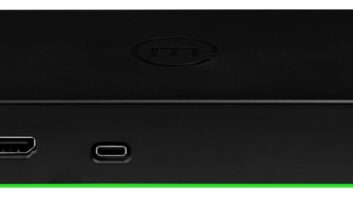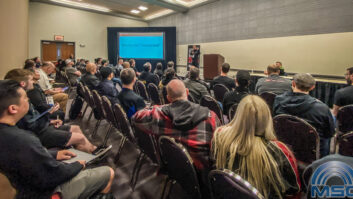TWICE: We’ve talked about consumers shying away from products that make their lives more complicated. Wasn’t the HTiB supposed to be the solution? And as a result, haven’t we essentially displaced higher ticket component sales with lower price, lower margin HTiB sales? Can we reverse that?
T. Paul Jacobs, Klipsch: I’m sure that we have. Going back a few fall selling seasons ago, a lot of retailers embraced HTiB. With the price compression of DVD, it was an easy way out: Sell a more expensive DVD player with speakers.
Retailers are now struggling with whether it was a mistake or not. I don’t think it was a mistake. I go back to the manufacturers. If we offered better options, there could have been a good, clear step-up path.
I remember when rack systems hit the market in the early 80s. People didn’t buy them because they necessarily sounded the best, but there weren’t [better sounding rack-system] options available. And that was in the days when component demos were still being done a lot.
There’s no reason that consumers won’t spend more money on those same kinds of products (HTiBs). There are always price points that are important, but where are the options? Bose has had no problem selling two speakers, a subwoofer and a little center section for $1,000. And for $3,000, you get a couple more speakers and a little bigger center section. And people are very happy to hand their money over. But where are the other options?
Kerry Moyer, CEA: There’s nothing wrong with HTiBs, but there needs to be some type of upgrade path. But what’s that going to be?
HTiBs are nothing more than the compact system of the early 21st century. And if we go back into the early ’60s and look at people who moved to component-based systems from compacts, most of that was driven by the fact that you were going from mono to stereo.
Today’s HTiB systems, however, are already multichannel, so you’re not going to be able to sell something different, in the sense of adding more speakers, to stimulate step-up sales. Instead, perhaps you could look at some of Onkyo’s A-Bus-equipped receivers. CEA has identified distributed audio as what could be the next big audio growth category.
If you could provide an HTiB upgrade path where not only could people listen to music in the home theater room but could also distribute that audio throughout the rest of the house, we think that’s more in keeping with today’s consumer lifestyle.
Don Milks, Onkyo: HTiB has been successful for two reasons. One, it’s easy to use and install. Perhaps even more important, it’s an easy sell for retailers, especially for some of the big-box movers whose people don’t have a tremendous audio background. They have a difficult time stepping up from a $399 or $499 HTiB to a more expensive component system.
A retailer in Madison, Wis. has tried to downplay HTiB. With every customer who shows an interest in a video product with a screen size of 30 inches or more, the salespeople start talking about home theater from a component standpoint. They even start talking about in-wall speakers and speakers in other rooms.
Franklin Karp, Harvey: There’s one problem with the thought that HTiB is yesterday’s shelf system. At first, the shelf system was an extra system; not your main system. HTiB has become the main system, and it’s underselling the consumer.
TWICE: Underselling because of a lack of step-up HTiB alternatives?
Karp: I don’t know if it’s a lack of product, a lack of demo, or a lack of really caring. But it’s a quick hit. And it’s a quick attachment to whatever video is going out the door.
Gary Bauhard, Pioneer: Is HTiB really the extension of the compact system, or is it today’s rack system? The rack system was developed because it took away the intimidation factor of making multiple component-buying decisions. It was a one-decision solution like HTiB.
I agree they’re being undersold. It’s silly that a $10,000 plasma display goes out of a store with a $1,000 HTiB.
Karp: It’s criminal, and it’s something I tell my sales guys regularly. I say, “Listen. Somebody just came in and is interested in a $10,000 video product. Did they just crack open their piggy bank to make the purchase? If they have 10 to spend on video, they have five or 10 to spend on audio. It’s your job to make them spend it.”
Bauhard: You have a proactive selling environment. Your people know what they’re doing. In many selling environments, that’s not the case. It’s cash-and-carry. I pick up a big four-color box, stuff it in the trunk, go home, and fire it up.
Eli Harary, Infinity: It is an easy decision. It actually is easy to hook up and use. It actually is more consistent with the industrial design of the flat-panel TV than most [component] products are. Traditional audio suppliers, especially on the speaker side, have been slow to move as quickly as TV sets into contemporary design and look.
Some speakers are very contemporary and match the design of plasma and LCD. But it still comes down to the willingness of the retailer to take time to let customers hear a better performing system. Then the retailer can add value to the package by bringing it to the house, setting it up, and programming it so all you have to do is press one button.
Clearly, it’s still a concern for consumers to make a decision on different components. Retailers, however, can do a better job of making that solution simple and taking the pain out of it, yet those same retailers are saying they’re selling too many $499 HTiBs and say they don’t know how to fix it.













